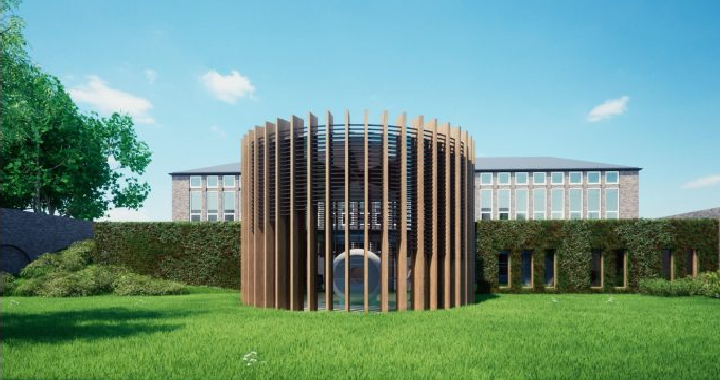This post is also available in Dutch.
New technology making this possible
Typically, magnetic resonance (MR) scanners have a field strength of 3T or 7T, with the strongest existing today being 11.7T in Paris. The magnets in these scanners require liquid helium as a cooling agent to be ‘superconductive’ and achieve the magnetic field strength. A new technology that uses different materials (so-called high temperature superconductors) enables even higher field strengths, while also not requiring quite such low temperatures. David told me that the first MRI scanners using this technology were originally developed for a very different purpose, namely being able to have MR scanners without helium at the Neonatal Intensive Care Unit (NICU), where helium is not available. Thanks to this development, Neoscan Solutions (the company building the magnet) were able to develop even stronger magnets.

The new scanner
With this higher field strength, we will be able to produce images with increased sensitivity and greater detail. The scanner itself will also be smaller compared to the strongest systems in place today, as the new technology requires less materials and does not require liquid helium for cooling. As the scanner is so compact the stray magnetic field is smaller, so we do not need to have magnetic shielding around the room that scanners typically have. That is why the size of the scanner in the image you see in the architect concept with the glass walls, is a rather possible impression of what it will look like.
Challenges to get there
The plan is to have the magnet on-site and stable in three years and having an operational system in five years. I was curious to know what David expects will be the biggest challenge with this project. He told me it would be to get the magnet on field (at the 14T field strength) and stable. He explains that there are “enormous forces inside the magnet” and all parts have to be physically stable. If parts start to move under the force of the magnetic field, even just a tiny bit, that movement will generate heat. Heating can lead to the magnetic field getting lower (quenching). However, because the design consists of separate parts, and that there is no need for liquid helium, the time that is needed to get the magnetic field back on will be shorter.
Once the system is operational, the focus will be to optimize sequences we often use today; anatomical scans, high speed fMRI, and spectroscopy, but with higher precision and a focus on getting very high quality data. The possibilities beyond that are plentiful and exciting for both fundamental and clinical research.
At the end of our conversation, David emphasized that it is a big “statement of faith in the Donders” that we get to build this here, but that it is definitely a collaborative effort and important for the whole Dutch MR community. In the long term, this initiative will hopefully lead to the development of more of these scanners.
If you want to read more about the project, the system, and the usefulness for science, check out this paper.
Author: Viola Hollestein
Buddy: Ping Chen
Editors: Helena Olraun, Felix Klaassen
Translation: Marlijn ter Bekke
Editor translation: Judith Scholing
Images: Artist’s impression from Croonen Architecten
